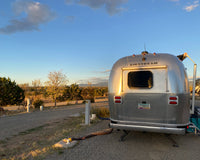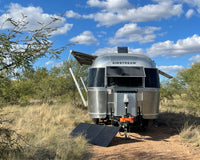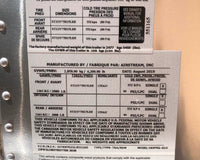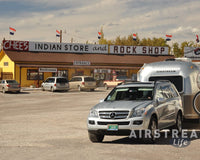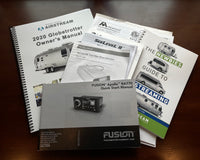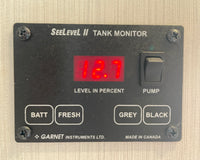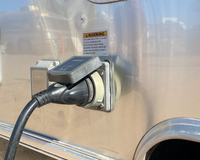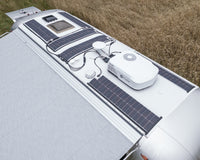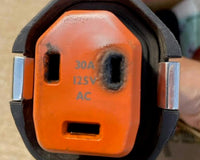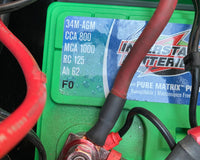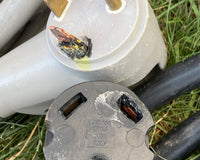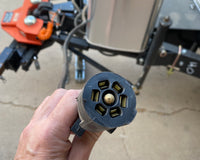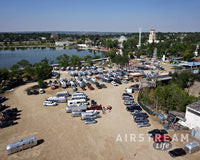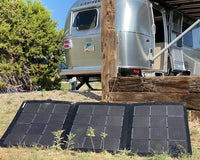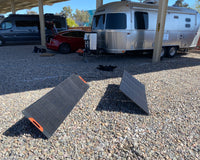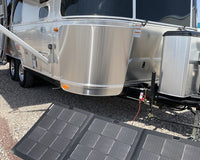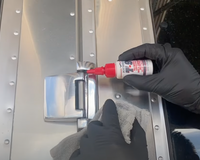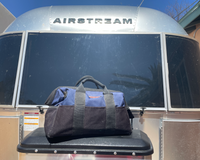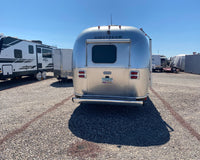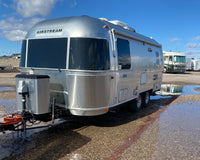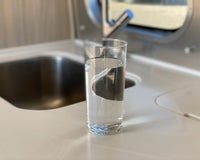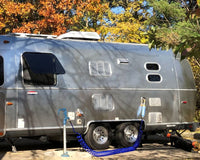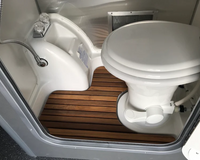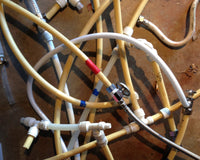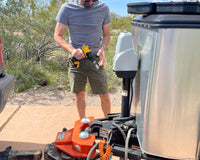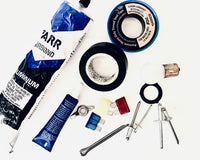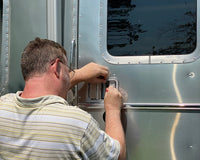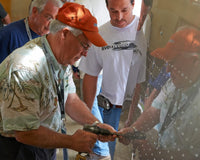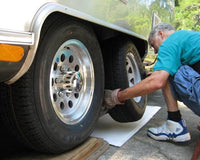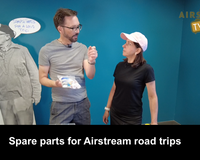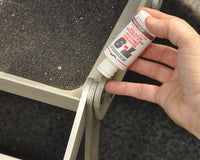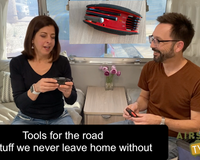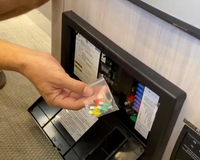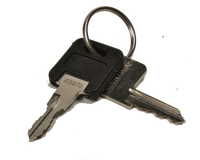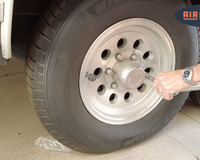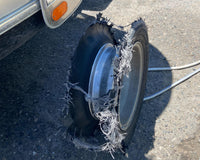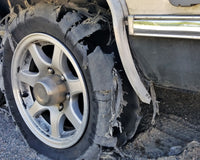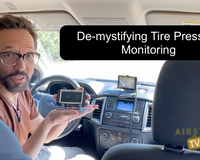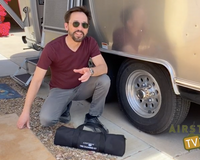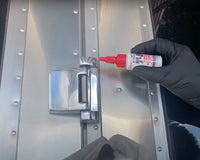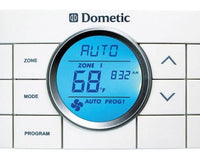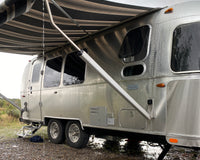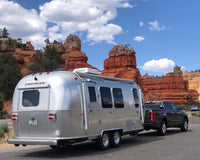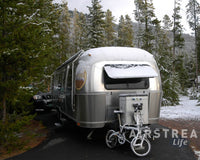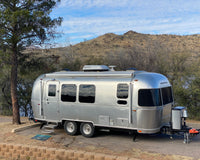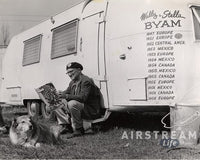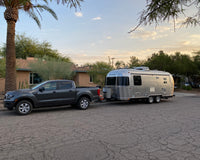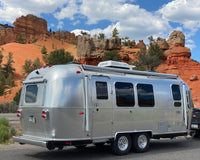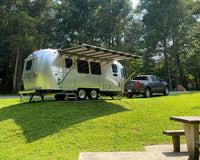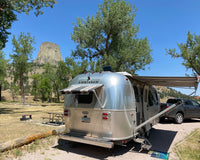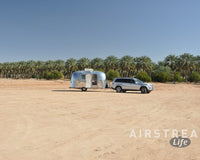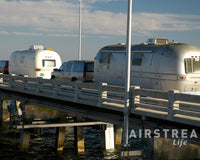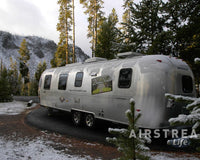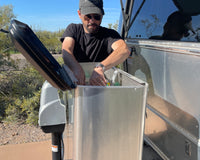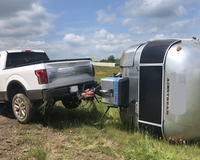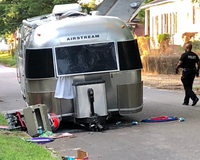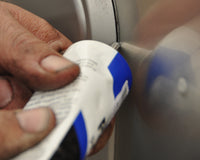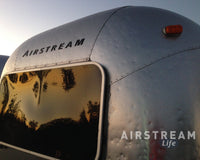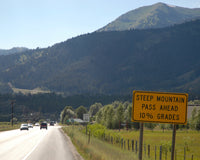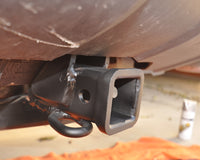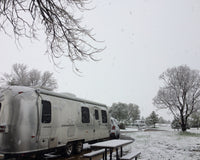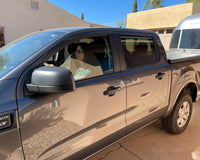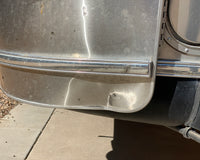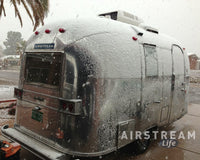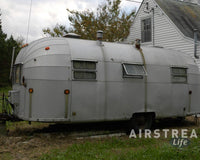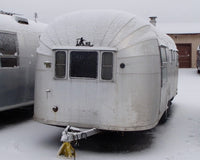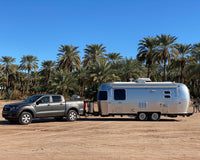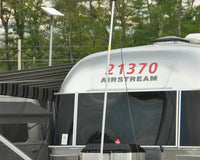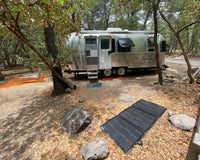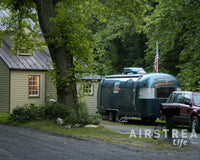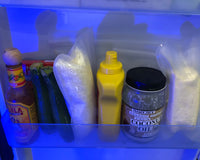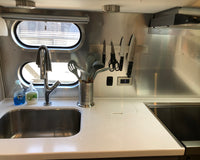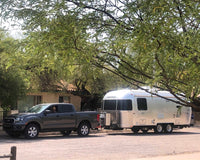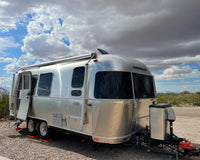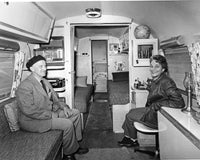At the ACI International Rally this summer, we met several Airstreamers who told us they've been traveling for years without a tire pressure monitoring system (TPMS).
"I check the tire pressure and add air before we leave, and a few times during the trip," said one of them. "We've never had a problem..."
Inside my head I finished his sentence, "yet."
Checking pressures and topping up tires is a good safety practice. We recommend it. But when you're towing, you can't feel when a tire's pressure is running low – or hot – until it's too late. Most people only learn of their blowout or flat after fragments of tire have torn the body of the Airstream, causing thousands of dollars in damage.
Why pre-checks are not enough
Checking tire pressures only when you're stopped is like a surgeon checking your vital signs only when he's not operating on you. Monitoring is important while you're driving (and during surgery) because that's when things can go wrong. You can run over a nail or tire fragments any time, or have a slow leak, or even have a dragging brake that makes the tire's air pressure climb too high.
What does a TPMS do?
A good TPMS constantly monitors the air pressure and temperature in the tires and shows that to you on a digital display. If either temperature or pressure goes out of normal range, an alarm and the digital monitor give you a clear warning, so you can pull over and check out what's going on.
How do you set it up?
Setup is pretty easy. First, you program the monitor to the tire pressure you normally run in your tires, and when you want it to alert you. TST recommends you set the low warning at 10% below your normal tire pressure, and the high warning at 25% above the normal tire pressure.
We make this easy by offering a free programming service when you buy a TPMS from AIR GEAR, or you can do it yourself in a few minutes. (If you want to know more about what pressure to use, read this blog.)
Then you screw a sensor onto each of the tire stems, and put the wireless monitor on the dashboard where you can see it. That's it! No tools are required.
How does it work?
The TST sensors are like little sentries on guard duty. They regularly report the tire pressure and temperature to the monitor on the dashboard. If anything changes substantially, they report immediately.
In this video, Rich demonstrates the essentials of how we use our TST system when traveling.
Do I need to upgrade to metal valve stems before installing a TPMS?
Not if you purchase cap sensors, which is the recommended sensor type for trailers. Cap sensors look like this:


Flow-through sensors are recommended for motorhomes because of the difficulty motorhome owners have getting at the tire stem to add air. The flow-through sensor does not have to be removed to do this, making this task easier for large motorhome tires and wheel wells.
Do I need to install TPMS sensors for my tow vehicle too?
Not on late-model tow vehicles, since they come with their own TPMS built-in.
Should I install a sensor on my spare tire?
This is optional, but we recommend it. We have a cap sensor on our spare. While traveling up and down high elevations last year, our TST system alerted us that the tire pressure was low in the spare; we topped up once we got to the campground.
Given the safety issues involved, why don't RV manufacturers install a TPMS standard in every RV sold?
Federal regulations only require TPMS on passenger vehicles, not trailers. However, some manufacturers have begun to include a TPMS with their higher end brands and models. Case in point: Airstream now includes a TST TPMS with Classic trailers.
It's likely that some day all RVs will include this safety system. But until that's a reality, we recommend every Airstream and RV owner purchase and install one.
Should I install the repeater that comes with the system?
Yes, you must install the repeater. TST requires it in order to activate the warranty, because these days many people are driving around with all kinds of Bluetooth and RF devices in their vehicles. The amount of potential interference is high, especially when you are traveling through cities. The repeater strengthens the signal and ensures important warnings will arrive promptly.
How do I install the repeater?
Connect it directly to the Airstream battery, according to the instructions in the TST kit. You'll connect positive to positive, and negative to negative. It's very easy. A red light indicates that the repeater is working. It draws so little power that you never need to disconnect it.
Where do I put the repeater?

How do I charge the display monitor? Does it have a battery?
It has a rechargeable battery, so you can just plug it into a USB port to charge it.
We typically charge ours overnight before a trip. A full charge lasts 2 - 3 days.
If the charge is 100% depleted in the monitor, will I have to reprogram all the sensors once it's recharged?
No, it won't forget. Just plug it into a USB port to recharge it and you'll be good to go.
Does a TPMS show all tire pressures and temperatures on the monitor at the same time?
It depends on the system. TST's system shows each individual tire's temperature and pressure, one at a time. It constantly scrolls through all the tires that have attached sensors, and displays the pressure and temperature at the moment of the reading.
Can I change the sensor batteries myself?
Yes.
The TST sensors take a coin battery, easy to find at a local hardware or retail store. Pop off the sensor's battery cover (explained in the instructions that come with the TST kit), replace the battery, and you are in business.
The sensor batteries typically need to be replaced about every 18 months.
What kind of battery does the sensor take?
The newer TST systems (in the last few years) take a CR 1632 coin battery. If you have an older system the sensors will take a CR 2032. Both are easy to find.
Should I remove the sensors during winter so they don't freeze?
No, you don't need to do this. The sensors and batteries won't be impacted by freezing temperatures.
Why don't you recommend a TPMS that works with an app?
We've tested other systems and did not find them to be as reliable as TST's system, which uses simple radio signals. This is superior to Bluetooth connectivity, which is what some of the app-based TPMSs use.
Additionally, we like the safety consideration of the TST monitor being only a data monitor, and not distracting us with many tempting features and apps that our mobile devices do.



